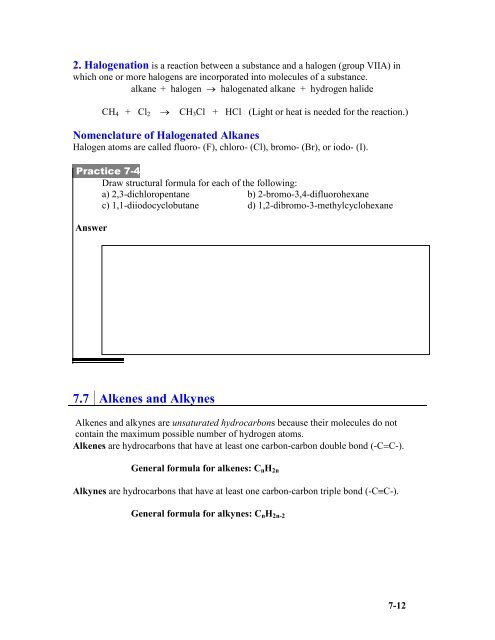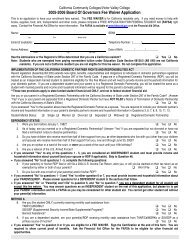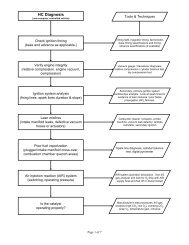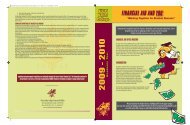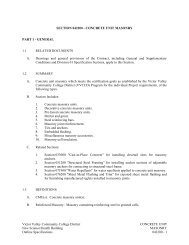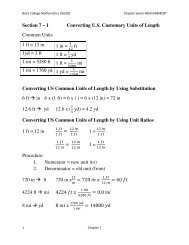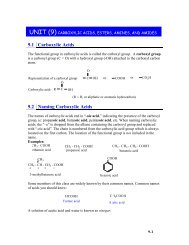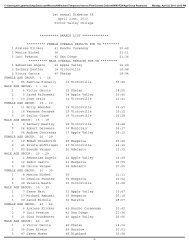unit (7) organic compounds
unit (7) organic compounds
unit (7) organic compounds
You also want an ePaper? Increase the reach of your titles
YUMPU automatically turns print PDFs into web optimized ePapers that Google loves.
2. Halogenation is a reaction between a substance and a halogen (group VIIA) inwhich one or more halogens are incorporated into molecules of a substance.alkane + halogen → halogenated alkane + hydrogen halideCH 4 + Cl 2 → CH 3 Cl + HCl (Light or heat is needed for the reaction.)Nomenclature of Halogenated AlkanesHalogen atoms are called fluoro- (F), chloro- (Cl), bromo- (Br), or iodo- (I).Practice 7-4Draw structural formula for each of the following:a) 2,3-dichloropentane b) 2-bromo-3,4-difluorohexanec) 1,1-diiodocyclobutane d) 1,2-dibromo-3-methylcyclohexaneAnswerCl ClBr F Fa) CH 3 - CH - CH - CH 2 - CH 3b) CH 3 - CH - CH - CH - CH 2 - CH 3Ic) Id)BrBrCH 37.7 Alkenes and AlkynesAlkenes and alkynes are unsaturated hydrocarbons because their molecules do notcontain the maximum possible number of hydrogen atoms.Alkenes are hydrocarbons that have at least one carbon-carbon double bond (-C=C-).General formula for alkenes: C n H 2nAlkynes are hydrocarbons that have at least one carbon-carbon triple bond (-C≡C-).General formula for alkynes: C n H 2n-27-12


